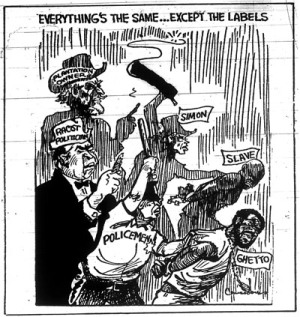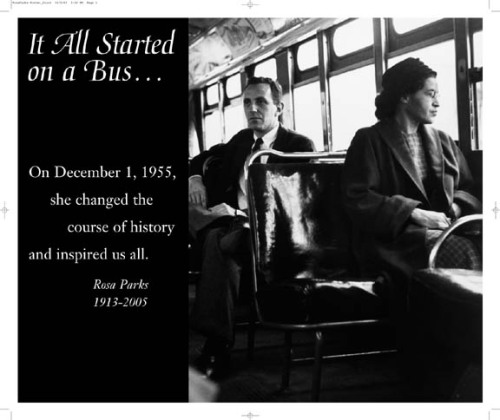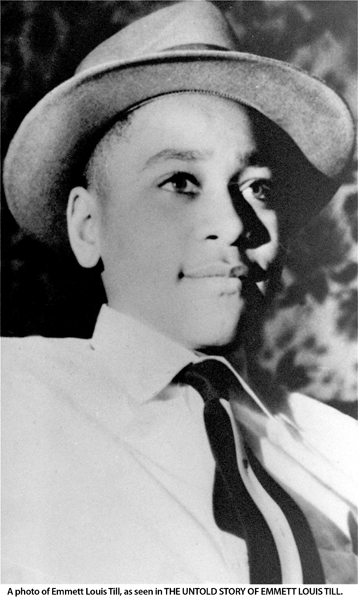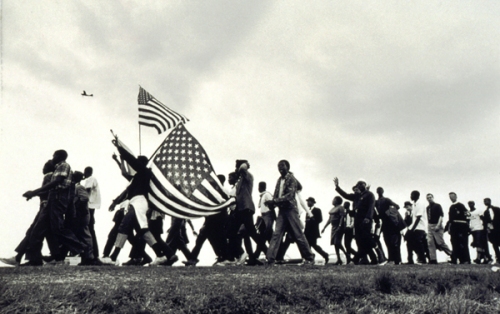Understanding the Movement
Political Cartoons:
A political cartoon is a cartoon that makes a point about a political issue or event. You can find them in any daily newspaper. However, their main purpose is not to amuse you but to persuade you. A good political cartoon makes you think about current events, but it also tries to sway your opinion toward the cartoonist’s point of view. The best political cartoonist can change your mind on an issue without you even realizing how he or she did it.
Activity: Test Yourself
In these practice activities, your task is to locate and properly label the persuasive techniques in each cartoon. Study the cartoon to decide where the cartoonist has used a persuasive technique. Then drag the label across the cartoon and drop it in the spot that correctly illustrates that persuasive technique (hint: look for the illuminated boxes). If you are correct, the label will lock into place! Keep trying until you have identified all the persuasive techniques in that cartoon. Beware… not every cartoon has every technique, and you may use only one persuasive technique label per spot.
Click Here to participate!!!
Test your analyzing skill and your knowledge!!!!
Filed under Uncategorized
The Struggle: A Look into the Past
I chose this video because it gives you a memorable look in the past. From the the Emancipation through the Civil Rights Movement. The song included isn’t just any song, it’s actually one written about the Civil Rights Movement. The title is called “Change gon’ Come”. It deals with the hardships of the movement but continues to stress that better days are around the corner. Even though its been a hard fight for equality and equity, let alone dignity, they believed. There were times when people in the movement thought that they couldn’t last but they kept hope and faith. They knew that change would eventually come…
Filed under Uncategorized
The Sit-Ins:Greensboro, Nashville, Atlanta
On February 1, 1960, four black college students at North Carolina A&T University began protesting racial segregation in restaurants by sitting at “white-only” lunch counters and waiting to be served. This was not a new form of protest, but the response to the sit-ins in North Carolina was unique. Within days sit-ins had spread throughout North Carolina, and within weeks they were taking place in cities across the South. Many restaurants were desegregated. The sit-in movement also demonstrated clearly to blacks and whites alike that young blacks were determined to reject segregation openly. The students’ bravery in the face of verbal and physical abuse led to integration in many stores even before the passage of the Civil Rights Act of 1964.
“With their very bodies they obstructed the wheels of injustice…”
By clicking here on The Sit-Ins, you will hear the aboutsit-ins from a different perspective most aren’t use to. This perspective gives insight into the actions that ordinary students took to fight against a system of oppression. A system built to maintain a “Separate but Equal” society. Those student tore down a system and helped the nation to realize that that system…was wrong. This system echoed superiority, inequity, inequality and injustice, all of which this democracy is suppose to oppose. The purpose of this is to help one understand that the Sit-Ins were more than just having a sand-which at a lunch counter. It was about human dignity.
Connecting with History: The Sit-Ins and Segregation
Activity– Imagine you were of those students and were refused service at all lunch counters in the city. What measures would you take to change this injustice. If you decide to do as the Greensboro, Nashville, Atlanta students did, then what strategies would you implement to make sure your sit-ins are a success.
Filed under Uncategorized
The Montgomery Bus Boycott
The Montgomery Bus Boycott was a year-long protest in Montgomery, Alabama, that galvanized the Amercian Civil Rights Movement. 42,000 black residents came together to protest the racially segregated seating. After 381 days of taking taxis, carpooling, and walking the hostile streets of Montgomery, African-Americans eventually won their fight to desegregate seating on public buses, not only in Montgomery, but throughout the United States. The 1965 decision by the Supreme Court of the United States declared segregated seating on buses Unconstitutional.
By clicking here on The Montgomery Bus Boycott, you can hear an excerpt that will give the details and struggle those Blacks fighting for desegregation went through. From hearing the excerpt, you can understand the boycott was done by ordinary people. You will also be able to understand that the boycott was a “Process” and not instantaneous as so many believe. The most shocking information you’ll receive will be that the Montgomery Bus Boycott was not the idea of Martin Luther King Jr. Most important, you will learn there were more people involved other than Rosa Parks and MLK Jr.
Filed under Uncategorized
The Little Rock Nine
The Little Rock Nine, as they later came to be called, were the first Black teenagers to attend an all-white Central High School in Little Rock, Arkansas, in 1957. these remarkable young African-American students challenged segregation in the Deep South and won. Although Brown v. Board of Education outlawed segregation in schools, many racist school systems defied the law by intimidating and threatening black students—Central High School was a notorious example. But the Little Rock Nine were determined to attend the school and receive the same education offered to white students, no matter what. By clicking here on Little Rock, you can hear an excerpt on the struggle and gain a better understanding of Little Rock itself.
Connecting with History and Conflict: Little Rock
Activity– Here, students are to imagine that they were principals or administrators of Little Rock’s central High School during the desegregation from 1957-1958. How would they keep order and promote tolerance and equity among their students?
- Get into small groups and come up with strategies and written guidelines for the school.
Filed under Uncategorized
Emmett Till
The purpose of this story on Emmett Till seeks to educate people on this particular event. His abduction and murder in Mississippi in August 1955, and the subsequent acquittal of his killer the following month, became not only a national story but also put Southern racism into the international spotlight. These events became a major force in the advancement of the Civil Rights Movement. Some would even say it was the catalyst.
Although the world watched the case unfold, it has been nearly 50 years since Emmet Till was murdered. Unfortunately, far too many people have forgotten the case or have never heard of it. Click here Emmett Till and hear an excerpt on his tragic event. After which, answer these questions on this event which became a catalyst for the movement.
- Was it right that Emmett Till was killed for his comments to Carolyn Bryant? Why or why not?
- Was the ruling on the Till case the right verdict? Was the Verdict right in your opinion? Why or Why Not?
- In what ways was there some form of superiority or inferiority?
- Have you ever heard of Emmett Till? If so, what impact does his story have on your thought of the Civil Rights Movement? If you’ve never heard of Emmett Till, why do you think that is?
Filed under Uncategorized
The Civil Rights Movement: Freedom & Struggle
We hold these truth to be self-evident, that all men are created equal, that they are endowed by their Creator with a certain unalienable Rights, that among these are Life, Liberty, and the pursuit of Happiness. ~ Thomas Jefferson~
Throughout history, African Americans resisted their slavery and later second-class citizenship. Opposition took many forms, from the passive resistance of slaves who performed poor work for their masters, to slave revolts, to slaves escaping to freedom on the Underground Railroad, to African Americans’ participation in the Abolitionist movement and their joining the Union army during the Civil War. The Civil Rights Movement of the 1950’s and 1960’s was a grass roots effort of ordinary citizens determined to end racial injustice in the United States. Black people engaged on a mission to end the status quo and inequity which was, and still is to this day, ingrained in the American society. The Civil Rights Movement became a lesson in realization.
“Our Society has normative interpretations of the movement,which always seems self-congratulatory. We as Americans they seem to be saying ultimately did the right things for the right reasons. Today, these uncritical normative interpretations cause us to loose touch with the evolving consciousness of activists, at the same time implicitly understating the extent of sacrifices made by those people.” ~Charles Payne~
These blogs will give you a piece of the real sweat, heart and sacrifices made by those individuals in the Civil Rights Movement. Although it’s only a piece, it’s a start….
Filed under Uncategorized






